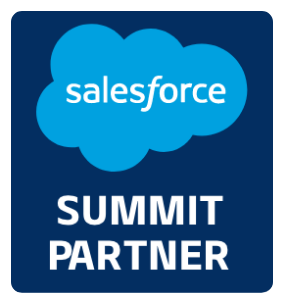
Overcoming the Limitations of Standard Salesforce Reporting
Whether due to integrating multiple systems or a departments’ reporting needs constantly changing and seemingly increasing in complexity, your team may have outgrown the out-of-the-box reporting capabilities of Salesforce. So, why should your team to consider looking beyond the standard reporting features and expand into CRM Analytics (CRMA)?
Actionable Insights
A key difference between CRM Analytics and Standard Reporting is that while Salesforce reports can explain what happened, CRM Analytics can explain why something happened.
With regards to data, CRM Analytics offers four advantages over standard Salesforce reporting.
Advantages of CRM Analytics
Expanded connected objects
Standard Salesforce report types only allow users to connect up to four related objects within a report. CRMA allows users the ability to extend beyond that limitation by connecting the object data together into a Data Set via Recipe.
External data sources
Additionally, CRM Analytics can be configured to pull data directly from external systems. This greatly expands your company’s reporting capability to include ALL the data in your organization, not just the data in Salesforce.
Data transformations
Unlike with standard reporting, CRM Analytics provides the ability to make complex transformations of the data via Recipes. As an example, in CRMA, full Outer and Inner joins of data are permissible, which is not possible in standard reporting.
Connected visualizations
CRM Analytics offers premium dashboards that allow faceting of the data visuals. As a user changes one thing in the dashboard, the surrounding data will automatically adjust accordingly. This is not a simply a filter on the dashboard that changes all the corresponding data point, rather as a user selects a specific data point, the dashboard will adjust accordingly to reflect the surrounding data specific to the data point selected.
Example of Faceting
One of the most compelling reasons to consider CRM Analytics is the ability to access and truly manage all your organization’s data in one place. Of course, CRM Analytics works natively with Salesforce, but what about the data that may live in a legacy system or some other complementary system outside of Salesforce? Traditionally, pulling this data and connecting it all together can be challenging, and it becomes even more of a lift depending how frequently the data changes. Fortunately, CRM Analytics allows users to either upload data manually or more conveniently via scheduled syncs with outside systems. This capability greatly increases the accuracy and freshness of the data.
Advanced Security
CRM Analytics honors the record security that is established on the data that originates from the Salesforce org. In short, users will not see records in CRM Analytics that they would not have access to in Salesforce.
For data originating outside the Salesforce org, CRM Analytics also provides additional security access which can be used in conjunction with or in lieu of the standard Salesforce security. This expands how an organization can share data with both internal user and external users outside of your organization such as Customers or Partners. The advanced security allows any key in the data along with any attribute on the User record to be leveraged for access. For example, if the underlying data set had a column denoting a department tied to particular records, the security predicate could be built to allow any User with the matching department to gain access to the data.
Whether it is a component on a record page, or a dashboard displayed on an Experience Cloud Site, your organization can present insightful, interactive data to all constituents. CRM Analytics’ security tools ensure that each audience can only see the data that’s appropriate for them.
Interactive Dashboards and Lenses
CRM Analytics gives users more tools to help bring their dashboard components to life and allows users to glean useful insight or actionable information. Whereas a filter can change what is reflected on a dashboard based on a certain set of criteria (Open/Closed, Dates, etc.), CRM Analytics takes that to a more granular level via data faceting. When a user clicks on a component on the dashboard, the underlying data will adjust accordingly so a user can better see and understand how the surrounding data is affected or how that data impacts the selection the user made. As a user selects a particular data point within the dashboard, the surrounding components will adjust accordingly.
This expands beyond traditional dashboard filters and allows the connected data to change to reflect selections a user may have made on the dashboard itself. A user can immediately see impacts of a particular event or opportunity record relative to other areas of the business or performance indicators upstream or downstream. Ideally the “explorations” of the data uncover a data point or insight that would not have been easily discernible in a tabular report format.
“Lenses” are another great exploratory feature of CRM Analytics. Similar to how an individual can create a standard report in their Salesforce org, a CRM Analytics user can create a “Lens” to explore the underlying data sets and make their own charts, graphs or data tables using all the tools of CRM Analytics (Data Transformation, Advanced Graphs). Furthermore, the creation of “Lenses” does not affect any of the existing dashboards or the underlying data sets and they can be saved and shared to foster follow up actions and/or collaboration.
Example of creating a Lens—selecting a Data Set and exploring the data
Versatile Applications
There are myriad manners in which CRM Analytics can be deployed and utilized ranging from being a powerful tool employed internally by an Analytics or Impact team to present findings and potential opportunities to teams within an organization. The other end of that spectrum is to make the data you want available externally to Portal users either end Customers and/or Partners.
For internal applications, there are of course various levels of access or functionality you can provide to users that can allow them to further self-explore the data via the dashboards via Lenses. Aside from all the CRM Analytics tools being available in the Analytics Studio workspace, Analytics components can be embedded directly onto Salesforce Lightning pages to allow a user to engage the enhanced data within their typical day-to-day operations thereby eliminating the need to toggle to a different area or page within the system.
In short, CRM Analytics makes all of your organization’s data visible, personalized, and actionable in one spot and can be applied almost anywhere within Salesforce.
Key Takeaways
CRM Analytics offers a sophisticated solution for organizations outgrowing standard Salesforce reporting. By providing insights into not just what happened but why, it addresses the complexities of evolving reporting needs. Its advantages include connecting to external data sources, facilitating complex data transformations, and offering connected visualizations.

Attain Partners – Salesforce Experts
Regardless of where your organization is in its Salesforce journey (or if it’s yet to start!), Attain Partners is here to help you achieve your goals and serve your community. Contact our team today to learn how we can help your organization advance its mission by harnessing the power of Salesforce.
To learn more, check out our Salesforce Innovation services, read case studies about our transformative work, and explore blog posts from our Salesforce experts.
About the Author

Carlos Figueras has over a decade of experience in Salesforce consulting, project management, and business analysis. He has earned 14 Salesforce certifications, including Education Cloud, Nonprofit Cloud and the Tableau CRM and Einstein Discovery certifications. At Attain Partners, Carlos is a Senior Consultant with nonprofits and universities, specializing in data modeling, analytics, and process automation.










